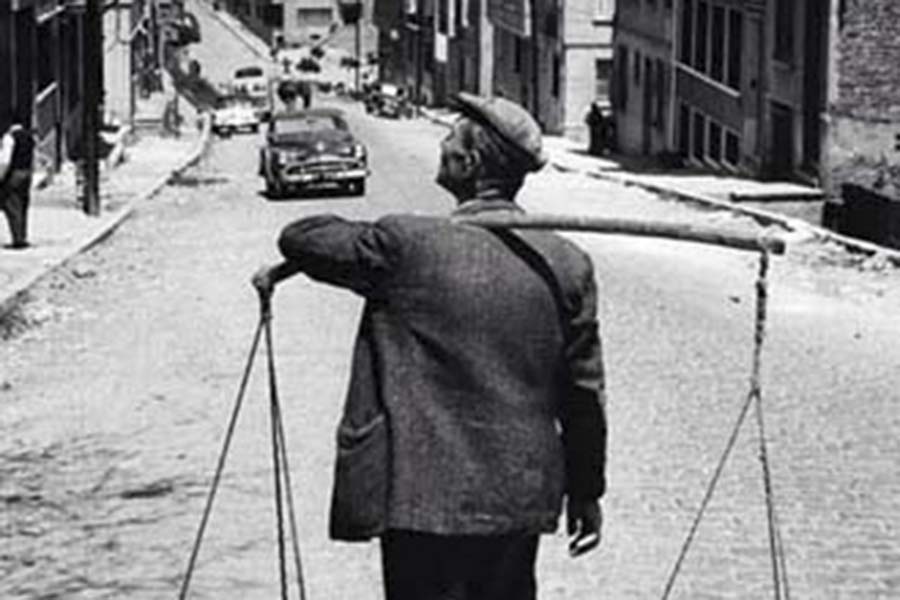Technologies Shaping Food Delivery and Consumer Experiences
Monday, September 16, 2019
By Nurhan Dunford, FAPC Oil/Oilseed Specialist
Just recently, I was reading an article about the history of food delivery and the impact of technology in the field. I learned pizza was the first home delivered food in the 1880s. Umberto and Margherita, the King and Queen of Italy at the time, loved Raffaele Esposito’s tomato, basil and mozzarella pizza but did not like the atmosphere in the restaurant, so they chose the best local “pizziola” to bring their pizza to the palace. Later, in the U.K., a system was set up to deliver food to families that had lost their homes during WWII, and the government provided hot meals to families around the nation to sustain the country’s morale.
During the 1950s, middle-class Americans were so preoccupied with watching their new television at home that they were happy to prepare their food in their kitchen and eat in. This brought the restaurant industry to the brink of collapsing. But, restaurants were quick to adapt and stayed in business by creating today's food home delivery service, even advertising their menus on TV.
This summer I have been traveling for work and leisure oversees. My visits to Turkey always bring nostalgia for food and cultural experiences I had as a kid growing up in this country. I cannot help but compare daily life in Turkey, then and today, and the life I have lived in the U.S. during the last 30 years. It is not surprising to observe technological advancements that have impacted life styles in both countries over the years, including what we eat, where we eat and how we get our food.
My mom purchased fresh produce and fruits at the local farmers’ markets weekly. Those markets were huge, much larger than the ones I have seen in the U.S. with a lot more variety from which to choose. Dry goods, i.e. beans, grains, nuts and some dried vegetables and fruits, ordered from our relatives who were still living and farming in small villages were saved and consumed during winter. Dried apricots and raisins were my dad’s favorites, and homemade fruit roll-ups were treats for us kids (no candies!).
During the 1960s, fresh and raw milk and yogurt, which are still the staple foods of the Turkish and Mediterranean diet, were brought to our doorsteps by peddlers direct from dairy farms nearby the suburbs we lived. These vendors did not have the means, tool and today’s technology to advertise their products. They did not even have vehicles or bicycles to carry their merchandise. They just strolled around the neighborhoods on foot, delivering bulk goods in metal containers tied to ropes attached to each end of a long wooden stick carried on their shoulder, just like seen in the picture. To get the attention of their clients, the vendors had blasted chants at high pitch and sung tunes bragging about the freshness and high quality of their products. Can you imagine the food safety related issues associated with those products that we are concerned about today? Maybe it was me, but I do not remember people complaining about getting sick from consuming those foods.
Going to a restaurant as a family was seldom, and I do not remember many restaurants offering takeout food, and certainly, there was no home food delivery, except a few wood burning stone or brick ovens that baked Turkish pizza (“pide” in Turkish) using the dough made in the bakery and the toppings/stuffing my mother prepared at home. We had to take the toppings for the open face and stuffing for the calzone type stuffed pizza to the bakery and run back home with the freshly baked hot “pide.”
All those vendors lost their livelihood to large grocery stores run by international chains today. Just like in the U.S., a lot of consumers, especially the younger generation, are eating at McDonald’s, KFC and Burger King, and drinking filtered coffee from Starbucks rather than the thick unfiltered Turkish coffee. Food home delivery is common, and young people are using the latest technology to order food on their cell phones, computers and even smartwatches, TVs and dashboard integrated in-car food ordering systems.
As technology continues to advance, the food delivery industry is expanding at a fast rate. Some of the new and interesting options for food order and delivery include placing your order in emojis on Twitter, online menus that can read your eye movements and guess what you want, and virtual assistant called Dom via Facebook messenger or Amazon’s Alexa. The industry is moving from delivering food by a driver on a bicycle, car or motorcycle to autonomous vehicles, robots and drone delivery using GPS signals, cameras and 3D city maps. In Australia, you can get your food dropped by a parachute by waiting at a location marked “X” and have fun trying to catch it.
New technologies also are very helpful for the niche food delivery platforms, i.e. finding vegan, farm-grown food or healthy smoothies and fighting food waste. Augmented reality and virtual reality have become common tools to enhance consumer experience, promote marketing campaigns, expand brand awareness and boost sales. Big data is being used to make food delivery more efficient by collecting data on road traffic, effect of temperature on food quality and safety, market trends, customer purchasing history,reviews and comments on social media, and posts and shares on social networks.
There is no doubt new technologies continue to change consumer experiences and lifestyles and variety, quality and affordability of the foods we consume and the business practices through fierce competition. It is up to us as consumers to use the technology to our benefit.

